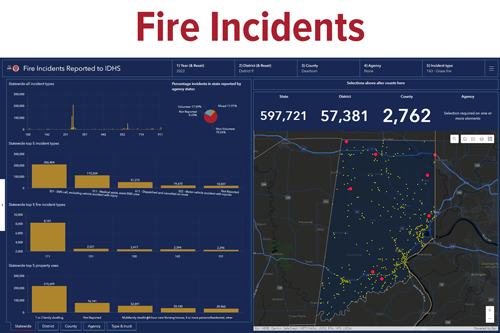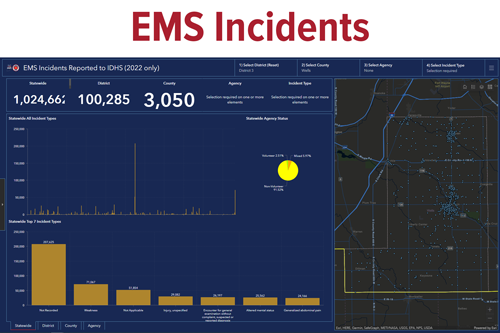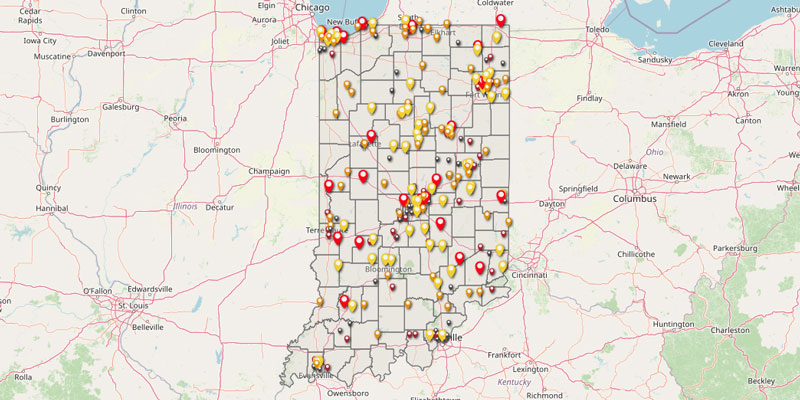
Updates
Using the Indiana Geocoder and Mile Marker Data
Highlighted Data
Additional Data
- Incident Data
Incident Dashboards
The Indiana Community Risk Reduction Coalition maintains two interactive dashboards designed for public safety agencies and the public to access fire and EMS incident data statewide. These incidents are shown on a map, and statistical figures are available at the state, district, county and local agency levels.
Data for the dashboards is from Indiana fire departments and EMS agencies as reported to the State Fire Marshal through ImageTrend. Learn more about ImageTrend Reporting
Access the dashboards below.
Note: The dashboards were designed for best viewing on screens 10 inches and larger.
Annual Statewide Incident Types
- Fire Investigations
- Resources





